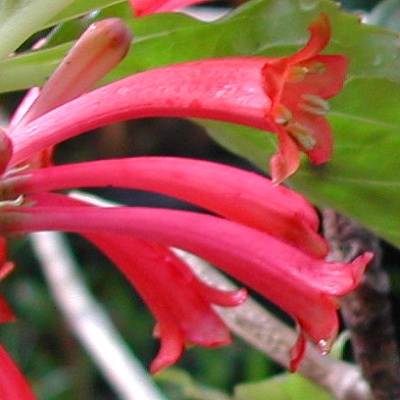Germinating the seeds
Plant your seeds when you receive them for the best germination
Getting started -- Use small containers or cups that have drainage holes. This plant prefers a loose, well-draining soil that is high in organic matter. A typical mix is 1 part potting soil
to 1 part
perlite Until the seeds sprout, ensure that the surface soil stays moist. An easy way to maintain moisture is to enclose the pots in a plastic container or bag - just leave it open slightly to allow some fresh air in. You may need to drip a few drops of water on the surface each day to keep it moist. They germinate well between about 66 and 77 degrees F (19-25°C). Avoid letting the seeds get
above 80° F (27°C) for prolonged periods. I recommend placing a
minimum/maximum thermometer near the pots. Watering -- Continue keeping the soil surface moist the first 3 weeks. Then keep the soil evenly moist most of the time. Don't let it dry out completely, but don't keep it perpetually soggy either. You may use a moisture meter probe to monitor the moisture levels down in the root zone. Climate -- The plant comes from a mild climate, without extremes in temperatures. It reportedly has handled temperatures up to 100 degrees F, but it is happiest below 90 degrees F (32°C). It can probably survive a few degrees of frost, but i recommend protecting it from all frost, especially the first year. The humidity should be above about 40%. Indoors, if
it seems to suffer from low humidity, consider using an ultrasonic room
humidifier, sold at home-improvement stores and some thrift shops. Transplanting -- When your plants are 2 months old, you may transfer them to a larger pot. Avoid damaging the delicate roots when repotting. The first week after transplanting, avoid packing the soil down, and give no direct sun or liquid fertilizer. The plant normally drops some or all of its leaves each winter when exposed to cool temperatures. Pests to watch for -- Watch for any pests that can affect your other
plants. - Jeff Strange Wonderful Things
|
|||||||||


